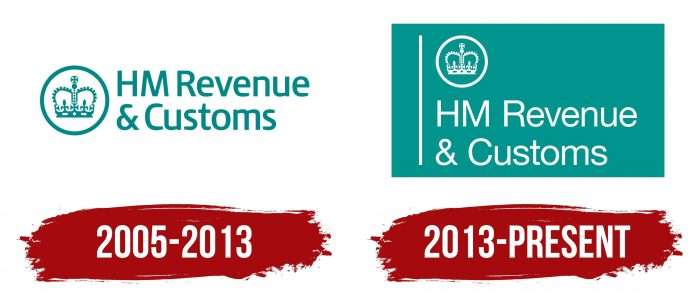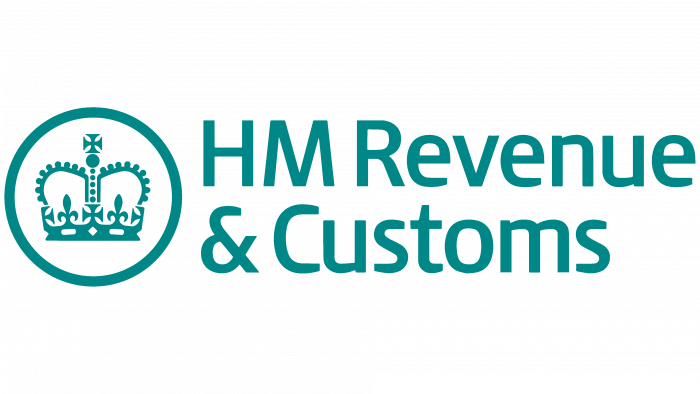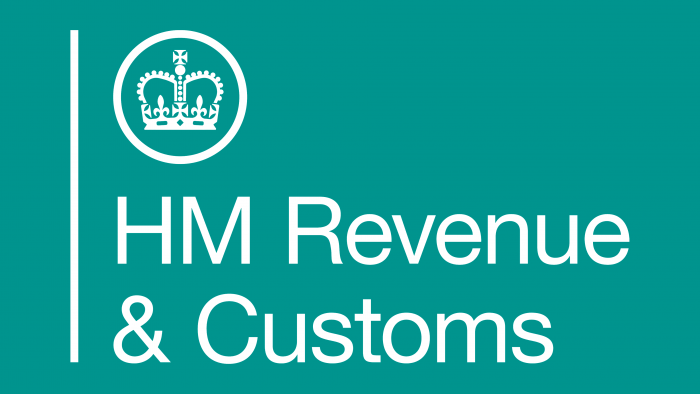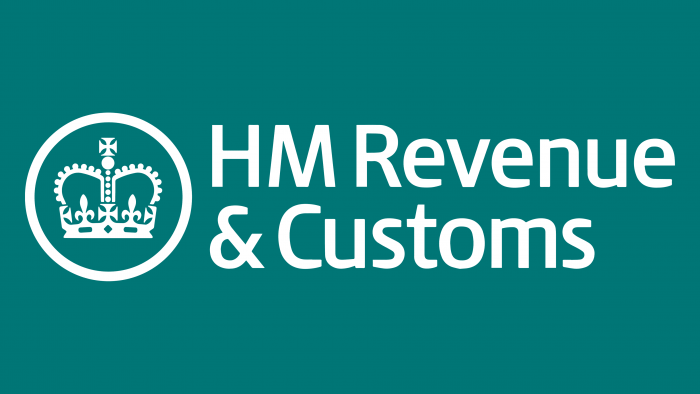The HMRC logo resembles an open and transparent book. This organization’s work depends on the country’s future. The emblem demonstrates the absence of surpluses, the precise implementation of the plan, and the harmonious distribution of incoming funds.
HMRC: Brand overview
Meaning and History
HMRC results from merging two services, Inland Revenue and HM Customs & Excise. This was announced a year before the official approval of the new department – in 2004, for which funds were specially allocated to the budget. The queen herself announced the planned event in her solemn speech. At the same time, the RCPO was established – the tax and customs prosecutor’s office, which is responsible for managing all profile cases.
The move to the staff at the Parliament Street building in Whitehall began in November 2004, which indeed signaled a major restructuring in the department. At the same time, the choice of an appropriate emblem was initiated, which would unite both structures and meet the high status of the civil service. Therefore, in the spring of 2005, the HMRC logo was also introduced. For the entire time of the department’s work, she had two logos – initial and current, which are almost indistinguishable.
What is HMRC?
HMRC is the acronym for Her Majesty’s Revenue and Customs. It appeared in the U.K. in 2005 due to the merger of two government agencies – Her Majesty’s Customs and Excise and Inland Revenue.
2005 – 2013
The Crown of St. Edward is a national and historical heritage symbol of statehood. It is a genuine jewel, as the prototype of the heraldic attribute was made from gold taken from the crown of the Anglo-Saxon king Edward the Confessor, who was in power in the 9th century. The very attribute of monarchical power appeared later (in 1661) and was intended for the enthronement of Charles II.
Therefore, the crown is included in collecting the so-called Crown Jewels of the United Kingdom – imperial regalia belonging exclusively to the state and not personally to the monarch. The shape of the hand-drawn crown matches the real one. It has four crosses and lilies, which alternate with each other. However, since the image is two-dimensional, some are not visible. Only two lilies are on the logo, one solid cross, and two halves at the edges.
Above them are two half-arcs (in reality, four), crowned with another cross. In addition, numerous balls represent the attribute of imperial power – these are symbols of precious stones with which the crown is inlaid. The largest is located at the top. There are 444 gems in total. A solid line of emerald color surrounds it. The text is colored the same way.
The department name is on the right. The words are ungrouped and span two lines. It says “HM Revenue” at the top and “& Customs” at the bottom. For this, uppercase and lowercase letters, even sans serifs, have been chosen in a strict style.
2013 – today
The modern emblem is a small rethinking of the opening with minimal alterations, if not to say its exact copy. The designers have removed the boldness of the font, so now the lettering looks thinner than before. They placed the crown in a circle above the name of the civil service and drew a vertical line to the left of them. It is painted emerald green, while all other elements are black.
HMRC: Interesting Facts
Her Majesty’s Revenue and Customs (HMRC), formed on April 18, 2005, from the merger of the Inland Revenue and Her Majesty’s Customs and Excise, is a key department of the UK Government. It’s tasked with tax collection, administering state support, and overseeing various regulatory regimes like the national minimum wage.
- Foundation: The merger aimed to increase efficiency, tackle tax evasion, and simplify the tax system.
- Responsibilities: HMRC handles Income Tax, VAT, Child Benefits, Tax Credits, National Insurance, Corporation Tax, and Inheritance Tax, as well as environmental taxes and customs duties.
- Technology Use: It employs artificial intelligence and machine learning for better tax compliance and fraud detection.
- Public Finance Contribution: Collecting billions annually, HMRC’s efforts fund crucial public services like healthcare and education.
- Global Collaboration: It works internationally to combat tax evasion and fraud, promoting transparency between tax authorities.
- Digital Initiatives: Leading the government’s digital transformation, HMRC introduced online tax services, simplifying compliance.
- Making Tax Digital: This initiative aims to streamline the UK tax system, requiring digital submission of tax information.
- Support and Education: HMRC offers resources like webinars and helplines to help taxpayers understand their obligations.
- Enforcement Powers: It can investigate tax fraud and evasion, conduct audits, or pursue criminal prosecution.
- Environmental Efforts: Besides its primary functions, HMRC administers taxes that promote sustainability and works to reduce its carbon footprint.
HMRC’s significant role extends from ensuring the government’s financial health to impacting individual citizens and businesses, reflecting its crucial place in the UK’s governance and economy.
Font and Colors
Like all English, the logo is distinguished by exquisite simplicity. There is not a single extra detail in it. The crown personifies the state, importance, high responsibility, and total power since this department can intervene in all matters at the slightest suspicion. The title is a key attribute that contains the department’s main information. The vertical stripe symbolizes a border that cannot be crossed since everyone not on HMRC’s side is automatically against the state.
The use of fonts in the UK government is highly regulated. The HM Revenue and Customs logo uses GDS Transport. As a last resort, it can be Helvetica or Arial typefaces.
The logo’s palette is restrained but not monochrome because it contains more than two colors: white for the background, black for the text and icons, and emerald for the line.
FAQ
Is HMRC based in London?
The main office is located in Westminster, London. This central location helps the agency work well with other government agencies and departments.
Employees in Westminster are close to the political and economic center of the UK. Those initially placed in other offices may later have to move to Westminster. This policy helps streamline operations. Temporary sites can be used to ease this transition before a permanent move.
What is an HMRC letter?
The letter is an official communication from HM Revenue and Customs to UK taxpayers. These letters address tax issues such as payments due, tax code changes, requests for additional information, or responses to taxpayer inquiries.
The agency uses these letters to notify individuals of past-due payments for a simple assessment tax bill. The letter performs several key functions:
- Notice of payment due
- Payment options
- Partial payments
- Consequences of non-compliance
These letters are part of the agency’s efforts to ensure compliance and the smooth running of the tax system.
What is the HMRC of the UK?
HM Revenue and Customs is a key part of the UK government. It manages the collection and administration of taxes such as income tax, corporation tax, capital gains tax, inheritance tax, and duties on alcohol, tobacco, and fuel. The agency funds government services and helps achieve the government’s financial goals.
The agency provides certain government support, such as tax credits and child benefits, offering important financial assistance to families and individuals in need. It ensures compliance with the UK’s fair labor and commercial standards, monitors the national minimum wage, and combats tax evasion to ensure fairness for all businesses and individuals. The department licenses businesses that sell alcohol or tobacco products, ensuring compliance with laws and regulations.
What does HMRC mean?
It is a department of the UK government concerned with administering and collecting taxes and enforcing tax laws. The agency processes payments for government benefits such as tax credits and child benefits.
Key Features:
- Tax collection
- Ensuring compliance with tax laws
- Government support management
- Regulatory Responsibilities
The agency’s effective performance generates government revenue and maintains fair financial obligations for citizens and businesses. This work maintains the country’s economic stability by ensuring everyone contributes their fair share according to the law.
Can I use the HMRC logo?
The logo is highly regulated as it represents the authority of HM Revenue and Customs. Its use is limited to official communications and purposes only. It is intended exclusively for the agency and its direct functions. Individuals, businesses, or other organizations may not use it for promotional purposes, advertising, or on websites.
Unauthorized logo use may result in legal consequences and compromise the agency’s integrity and the public’s confidence in its role as the UK’s tax authority.
When was HMRC formed?
It was created in the UK in 2005 by merging Inland Revenue, which collected direct taxes, and HM Customs and Excise, which processed goods and services taxes such as VAT and customs duties. By bringing these departments together, the agency aimed to eliminate duplication, reduce bureaucracy, and create a more cohesive approach to managing tax and customs in the UK. It ensures the tax system runs efficiently and supports public services, raising billions of pounds yearly.








